Search Result
Results for "
GBM
" in MedChemExpress (MCE) Product Catalog:
1
Isotope-Labeled Compounds
| Cat. No. |
Product Name |
Target |
Research Areas |
Chemical Structure |
-
- HY-125427
-
|
|
OLIG2
|
Cancer
|
|
SKOG102 is a potent OLIG2 inhibitor that is directly engaging OLIG2 and interferes with the ability of OLIG2 to bind DNA. SKOG102 can be used for the research of glioblastoma (GBM) .
|
-

-
- HY-155532
-
|
|
Biochemical Assay Reagents
|
Cancer
|
|
10m/ZS44 is a blood-brain barrier-permeable Glioblastoma (GBM) inhibitor. 10m/ZS44 significantly inhibits GBM tumor growth in a mouse xenograft model. 10m/ZS44 also activates the SIRT1/p53-mediated apoptosis pathway, thereby inhibiting the proliferation of U251 cells .
|
-

-
- HY-N9341
-
|
|
Autophagy
|
Cancer
|
|
Norswertianin, a xanthone compound, serves as a powerful anti-glioma compound. Norswertianin induces GBM cells differentiation through oxidative stress and Akt/mTOR dependent autophagy .
|
-
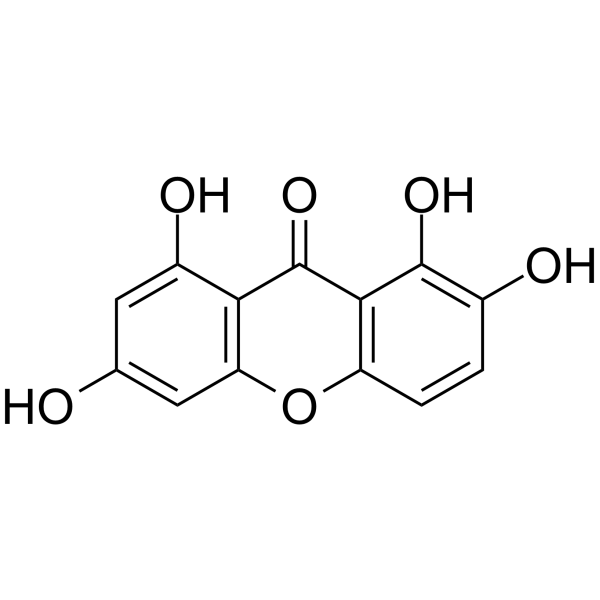
-
- HY-111452
-
|
|
EGFR
|
Cancer
|
|
EGFR-IN-85 (Compound 1) is an EGFR inhibitor. EGFR-IN-85 has IC50 value of 0.19 μM for EGFRvⅢ phosphorylation. EGFR-IN-85 can suppress EGFR signaling within tumors. EGFR-IN-85 can be used for Glioblastoma (GBM) research .
|
-
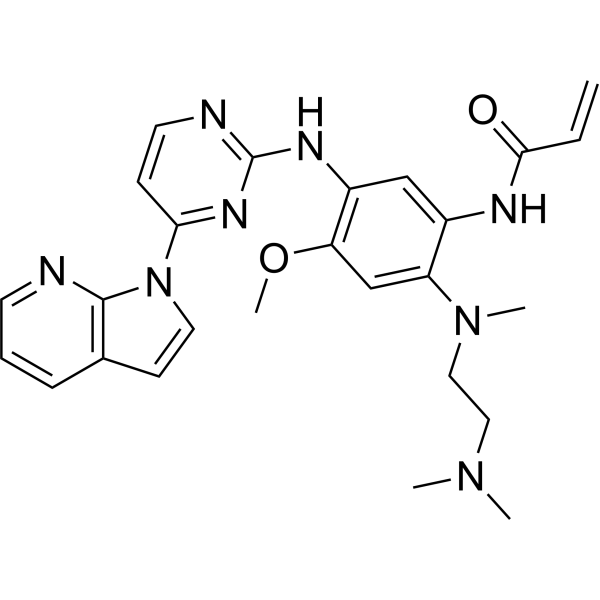
-
- HY-147789
-
|
|
Akt
|
Neurological Disease
Cancer
|
|
FPDT is an anti-glioblastoma agent. FPDT displays the IC50 value of 45–68 μM for GBM cells and >100 μM for astrocytes. Anti-glioblastoma activity of FPDT is linked to downregulation of the AKT pathway .
|
-

-
- HY-144720
-
|
|
Others
|
Cancer
|
|
BRG1-IN-1 (Compound 11d) is a potent inhibitor of BRG1. BRG1-IN-1 shows better efficacy than PFI-3 in sensitizing GBM cells to the antiproliferative and cell death inducing effects of Temozolomide in vitro. BRG1-IN-1 enhances the inhibitor effect of Temozolomide on the growth of subcutaneous GBM tumors .
|
-
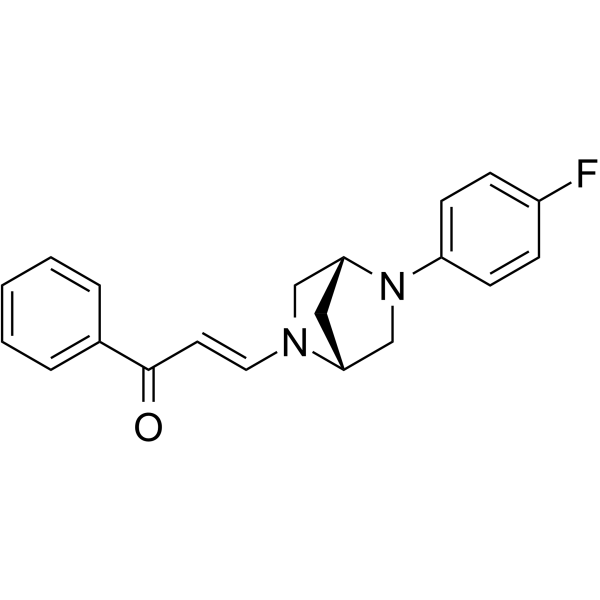
-
- HY-12616
-
|
|
LPL Receptor
|
Cancer
|
|
ACT-209905 is a S1P1 receptor agonist. ACT-209905 can inhibit glioblastoma (GBM) cell growth and migration. ACT-209905 also has immunomodulating activity, and can be used in research of autoimmune diseases .
|
-

-
- HY-125964
-
|
|
Survivin
|
Cancer
|
|
LLP-3 is a potent Survivin inhibitor that disrupts the Survivin-Ran interaction in cancer cells. LLP-3 can be used in the research of Glioblastoma multiforme (GBM) .
|
-

-
- HY-17595
-
|
|
Parasite
Apoptosis
Microtubule/Tubulin
|
Infection
Cancer
|
|
Mebendazole is a highly effective, broad-spectrum antihelmintic against nematode infestations. Mebendazole also exhibits inhibitory effect against glioblastoma multiforme (GBM), inhibits Hedgehog pathway and tubulin polymerization. Mebendazole is orally active and can cross CNS penetration .
|
-
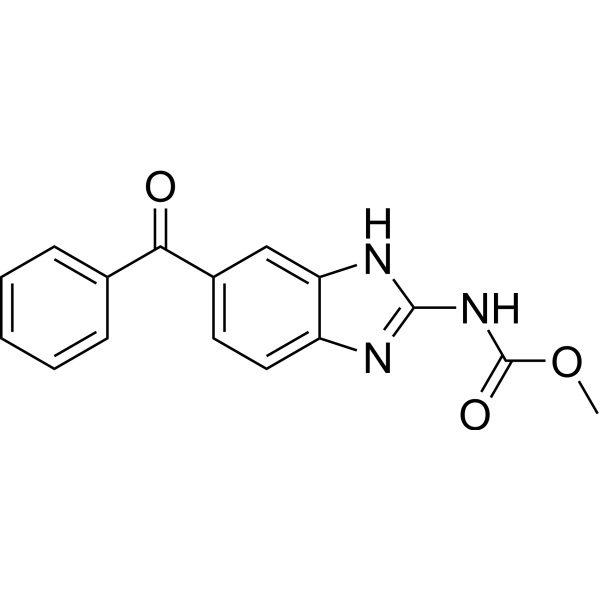
-
- HY-103407
-
|
|
Dopamine Receptor
|
Neurological Disease
Cancer
|
|
PD 168568 is a orally active and potent dopamine receptor D4 (DRD4) antagonist. PD 168568 contains an isoindolinone and is selective for the D4 receptor versus D2 and D3, with Ki values of 8.8, 1842, and 2682 nM, respectively. PD 168568 can be used for glioblastoma (GBM) research .
|
-
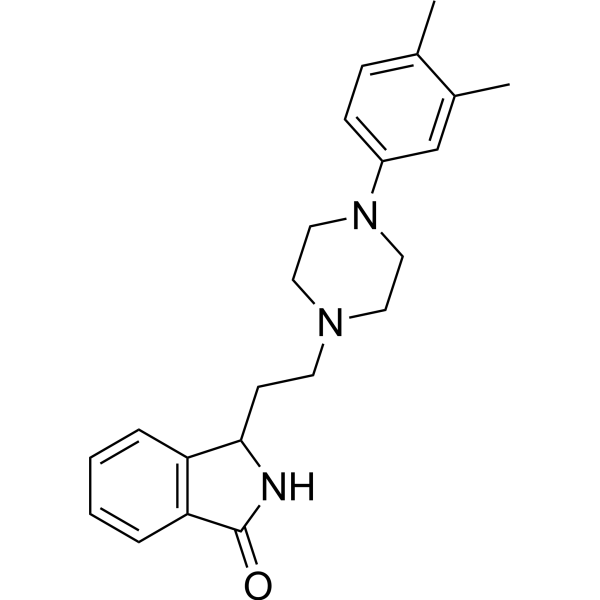
-
- HY-144438
-
|
|
Aurora Kinase
LIM Kinase (LIMK)
|
Cancer
|
|
Aurora/LIM kinase-IN-1 (Compound F114) is a potent and dual inhibitor of aurora and lim kinase. Aurora kinases and lim kinases are involved in neoplastic cell division and cell motility, respectively. Aurora/LIM kinase-IN-1 inhibits GBM proliferation and invasion. Aurora/LIM kinase-IN-1 is a promising new scaffold for dual aurora/lim kinase inhibitors that may be used in future agent development efforts for GBM, and potentially other cancers .
|
-
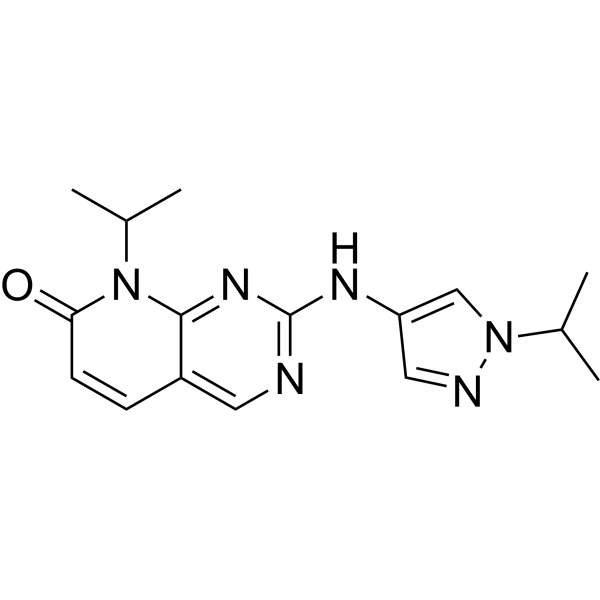
-
- HY-114413
-
|
|
HSP
Apoptosis
|
Cancer
|
|
YZ129 is an inhibitor of the HSP90-calcineurin-NFAT pathway against glioblastoma, directly binding to heat shock protein 90 (HSP90) with an IC50 of 820 nM on NFAT nuclear translocation. YZ129-induced GBM cell-cycle arrest at the G2/M phase promotes apoptosis and inhibited tumor cell proliferation and migration .
|
-

-
- HY-155889
-
|
|
Epigenetic Reader Domain
|
Cancer
|
|
IV-275 is an inhibitor of both BRG1 and BRM bromodomains. IV-275 increases the extent of DNA damage induced by Temozolomide (HY-17364) and Bleomycin (HY-108345). IV-275 inhibits the invasiveness of GBM cells. IV-275 enhances Temozolomide-induced cell death and the apoptosis-inducing activity of Temozolomide .
|
-
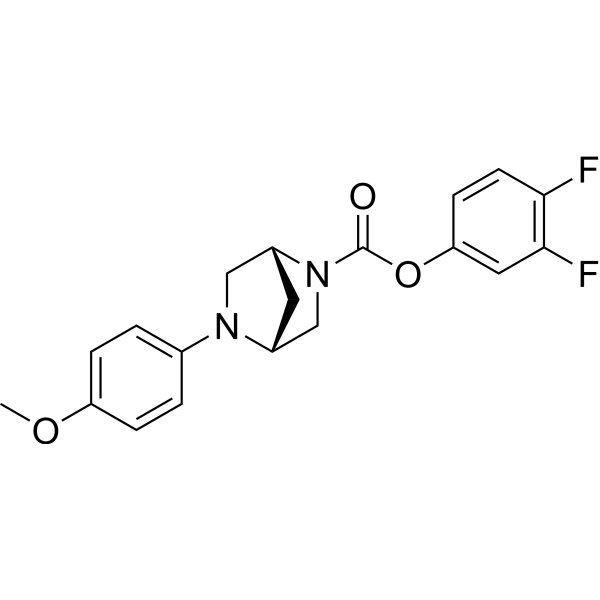
-
- HY-155888
-
|
|
Epigenetic Reader Domain
|
Cancer
|
|
IV-255 is a selective small molecule inhibitor of the BRG1 bromodomain. IV-255 increases the extent of DNA damage induced by Temozolomide (HY-17364) and Bleomycin (HY-108345). IV-255 inhibits the invasiveness of GBM cells. IV-255 enhances Temozolomide-induced cell death and the apoptosis-inducing activity of Temozolomide .
|
-

-
- HY-12456
-
|
|
Antibiotic
ADC Cytotoxin
DNA Alkylator/Crosslinker
Necroptosis
Apoptosis
|
Cancer
|
|
Duocarmycin SA is an orally active antitumor antibiotic with an IC50 of 10 pM . Duocarmycin SA is an extremely potent cytotoxic agent capable of inducing a sequence-selective alkylation of duplex DNA. Duocarmycin SA demonstrates synergistic cytotoxicity against glioblastoma multiforme (GBM) cells treated with proton radiation in vitro .
|
-
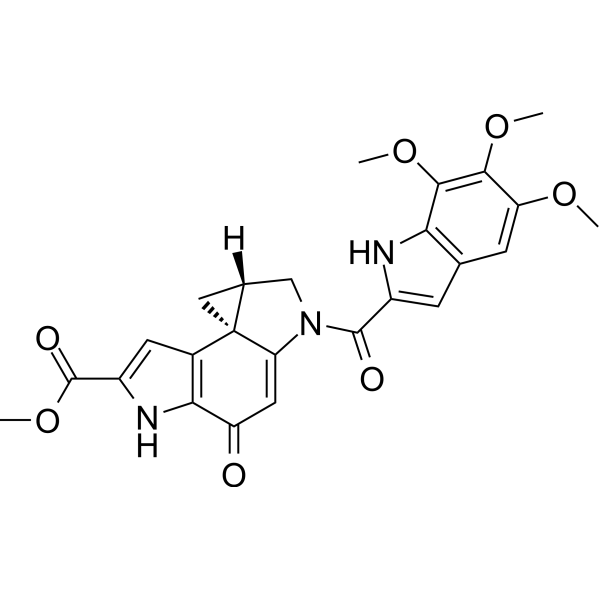
-
- HY-125466
-
|
|
RIP kinase
Apoptosis
Caspase
|
Cancer
|
|
cRIPGBM, a proapoptotic derivative of RIPGBM, a cell type-selective inducer of apoptosis in GBM cancer stem cells (CSCs) by binding to receptor-interacting protein kinase 2 (RIPK2), with an EC50 of 68 nM in GBM-1 cells .
|
-
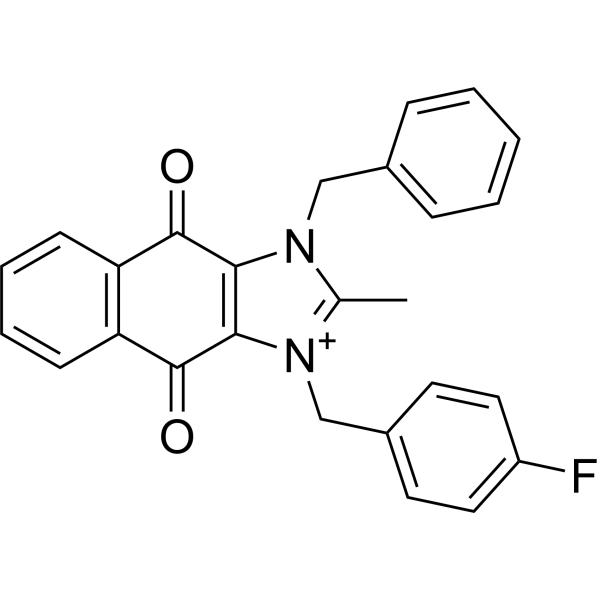
-
- HY-P99445
-
|
APG101; CAN008
|
TNF Receptor
|
Inflammation/Immunology
Cancer
|
|
Asunercept (APG101; CAN008) is a soluble CD95-Fc fusion protein targeting CD95L. Asunercept disrupts CD95/CD95L signaling by selectively binding to CD95L. Asunercept can be used in the research of glioblastoma multiforme (GBM), myelodysplastic syndrome (MDS), and graft-versus-host disease (GvHD) .
|
-
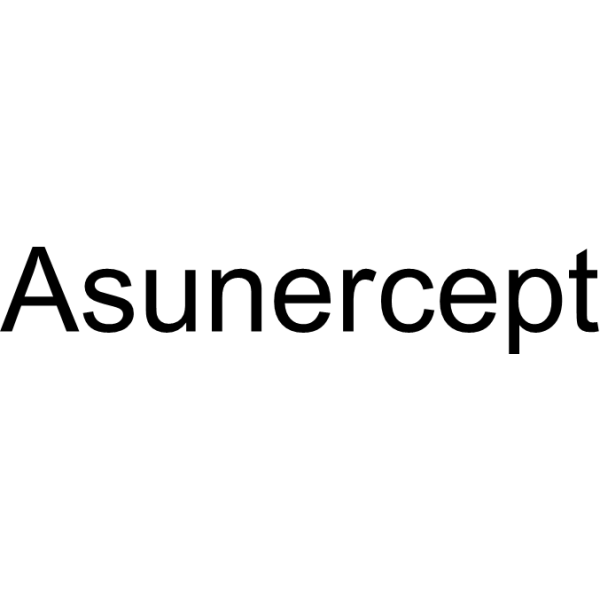
-
- HY-108476
-
INDY
2 Publications Verification
|
DYRK
|
Cancer
|
|
INDY is a potent and ATP-competitive Dyrk1A and Dyrk1B inhibitor with IC50s of 0.24 μM and 0.23 μM, respectively. INDY binds in the ATP pocket of the enzyme and has a Ki value of 0.18 μM for Dyrk1A. INDY sharply reduces the self-renewal capacity of normal and tumorigenic cells in primary Glioblastoma (GBM) cell lines and neural progenitor cells .
|
-
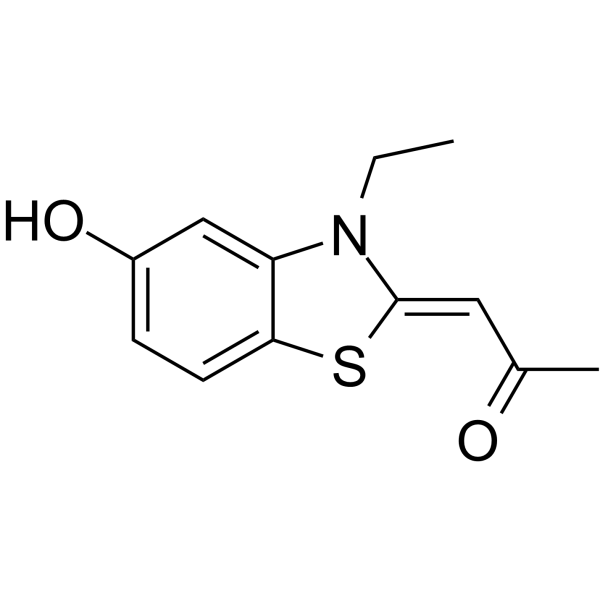
-
- HY-148833
-
|
|
MDM-2/p53
|
Cancer
|
|
MDM2-p53-IN-16 is a MDM2-p53 complex inhibitor with an IC50 value of 4.3 nM to dissociate human p53/MDM2 complex. MDM2-p53-IN-16 reactivates p53, and induces Glioblastoma Multiforme (GBM) cell apoptosis and cell-cycle arrest. MDM2-p53-IN-16 can be used for the cancer research .
|
-
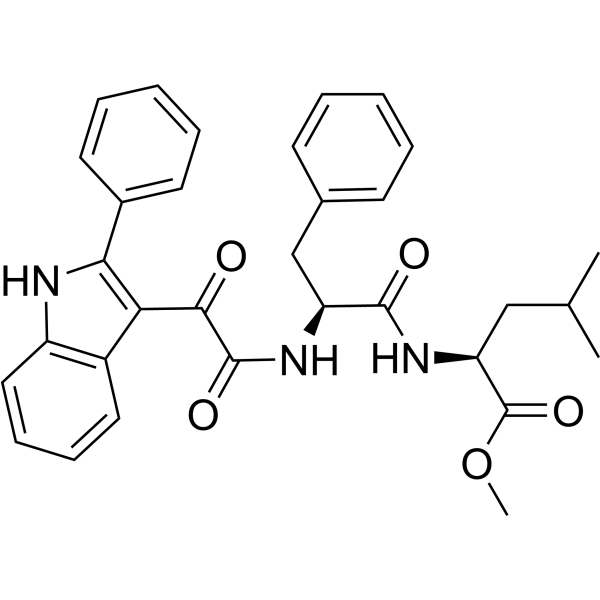
-
- HY-149696
-
|
|
NF-κB
|
Cancer
|
|
IR-Crizotinib is a NF-κB-inducing kinase (NIK) inhibitor that crosses the blood-brain barrier and fluorescently localizes intracranial glioblastoma (GBM) in mice (IC50=3.381 μM). IR-Crizotinib is conjugated from the near-infrared dye IR-786 and the NF-κB-inducing kinase (NIK) inhibitor Crizotinib. IR-Crizotinib can effectively inhibit the growth and invasion of glioma in vitro and in vivo and can be used in cancer research .
|
-

-
- HY-W278944
-
|
|
Others
|
Cancer
|
|
Antiproliferative agent-15 is an anticancer agent. Antiproliferative agent-15 shows antiproliferative activity against human colon (HCT116 and HCT15) and brain (LN-229 and GBM-10) cancer cell lines .
|
-

-
- HY-124813
-
|
113B7
|
FAK
EGFR
MMP
|
Cancer
|
|
PDZ1i is a potent, BBB-penetrated and specific MDA-9/Syntenin inhibitor. PDZ1i inhibits crucial GBM (glioblastoma multiforme) signaling involving FAK and EGFRvIII. PDZ1i reduces MMP secretion. PDZ1i can improve survival of brain tumor-bearing mice and reduce tumor invasion .
|
-
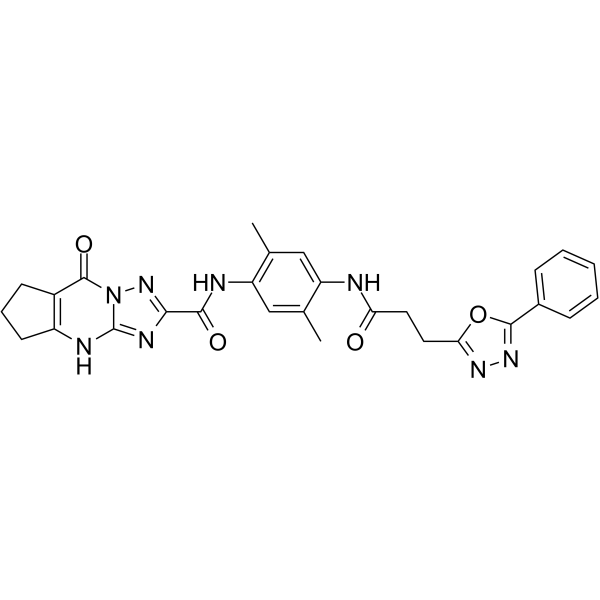
-
- HY-122910
-
|
|
Apoptosis
|
Cancer
|
|
RIPGBM is a selective inducer of apoptosis in glioblastoma multiforme (GBM) cancer stem cells (CSCs) with an EC50 of ≤500 nM .
|
-
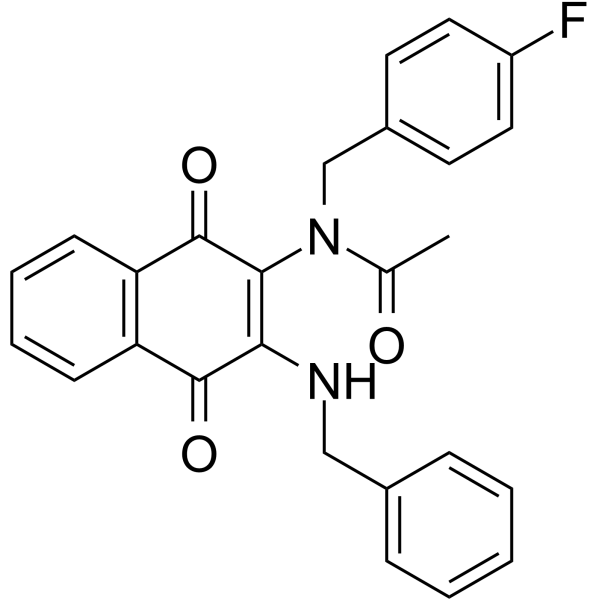
-
- HY-13610
-
|
|
Caspase
|
Cancer
|
|
N1,N11-Diethylnorspermine (DENSPM) is a potent anticancer agent. N1,N11-Diethylnorspermine is a spermine analog that activates polyamine catabolism. N1,N11-Diethylnorspermine induces the release of cytochrome c from mitochondria, resulting in activation of caspase 3. N1,N11-Diethylnorspermine kills glioblastoma multiforme (GBM) cells through induction of SSAT (spermidine/spermine N1-acetyltransferase) coupled with H2O2 production .
|
-
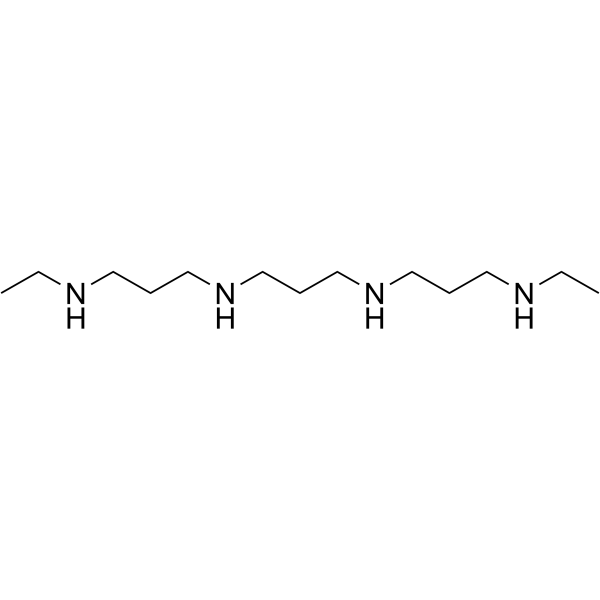
-
- HY-123903
-
|
|
Others
|
Cancer
|
|
Tanshindiol B, a naphthaquinone diterpene, inhibits GBM growth by induction of noptosis (NQO1-dependent necrosis) .
|
-
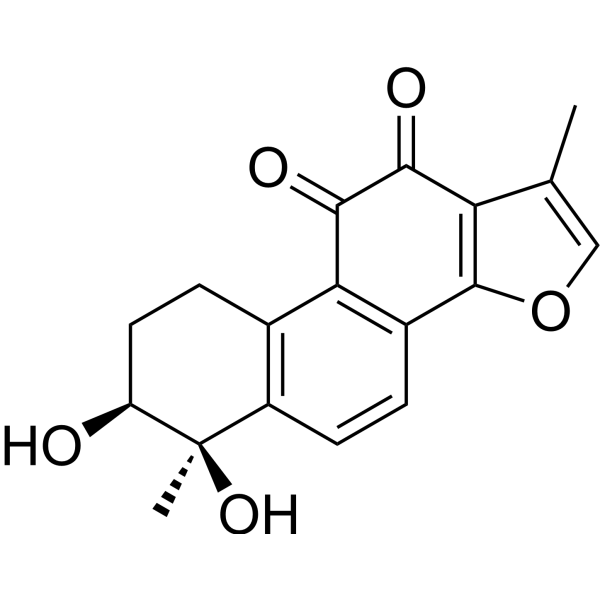
-
- HY-111652
-
|
|
Others
|
Cancer
|
|
S-Gboxin, a functional analogue of Gboxin, inhibits growth of mouse and human glioblastoma (GBM) with an IC50 of 470 nM . Antitumour activity .
|
-
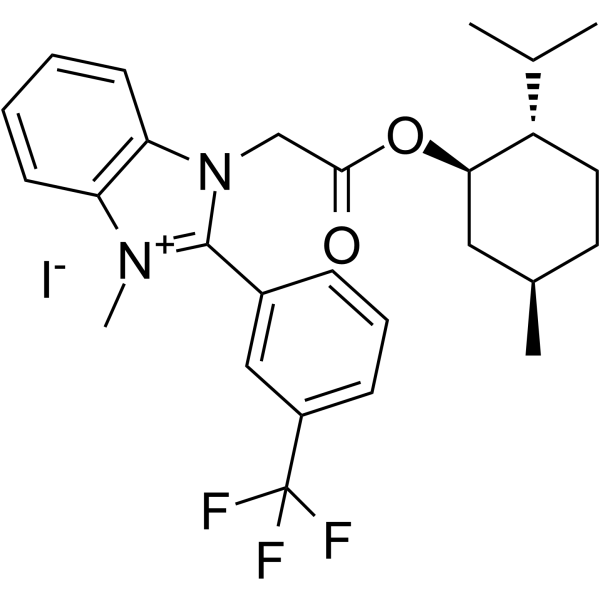
-
- HY-161025
-
|
|
c-Fms
VEGFR
|
Cancer
|
|
SYHA1813 is a dual inhibitor of CSF1R and VEGFR. SYHA1813 has potent antitumor activity against GBM .
|
-
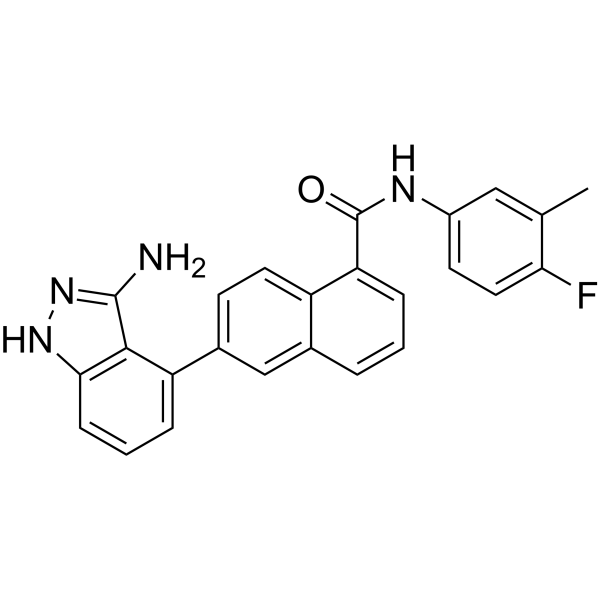
-
- HY-120864
-
|
|
Wnt
|
Cancer
|
|
SEN461 is a potent and orally active Wnt pathway inhibitor. SEN461 shows effective anti-tumor activity and can be used for GBM research .
|
-

-
- HY-163288
-
|
|
Histone Methyltransferase
HSP
Apoptosis
|
Cancer
|
|
EZH2/HSP90-IN-29 is a dual inhibitor for EZH2 and HSP90, with IC50s of 6.29 nM and 60.1 nM, for EZH2 and HSP90, respectively. EZH2/HSP90-IN-29 increases apoptosis/necrosis-related gene expression, induces cell cycle arrest at M phase and inhibits reactive oxygen species (ROS) catabolism pathway. EZH2/HSP90-IN-29 is able to cross the blood-brain-barrier (BBB) .
|
-

-
- HY-162153
-
|
|
FGFR
|
Cancer
|
|
CYY292 is an FGFR1 inhibitor that specifically targets the FGFR1/AKT/Snail pathway in GBM cells. CYY292 dose-dependently inhibits cancer cell proliferation, epithelial-mesenchymal transition, stemness, invasion, and migration in vitro .
|
-
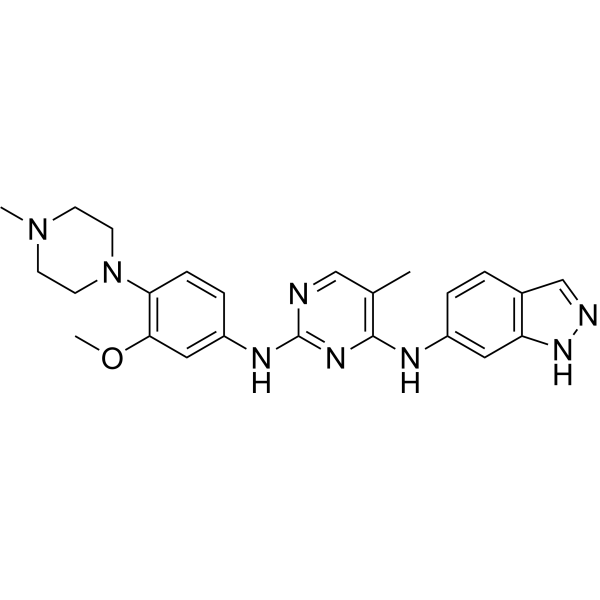
-
- HY-161256
-
|
|
Microtubule/Tubulin
Apoptosis
|
Cancer
|
|
Tubulin inhibitor 41 (Compd D19), a promising anti-GBM (glioblastoma) lead compound and tublin inhibitor with BBB permeability, induces G2/M phase arrest, resulted in cell apoptosis and inhibits the migration of U87 cells .
|
-

-
- HY-163359
-
|
|
Cytochrome P450
HDAC
|
Cancer
|
|
CYP17A1/HDAC6-IN-1 (compound 12) is a potent inhibitor of CYP17A1/HDAC6, with IC50 of 0.284μM and 0.6015 μM,respectively. CYP17A1/HDAC6-IN-1 has anti-tumor activity .
|
-
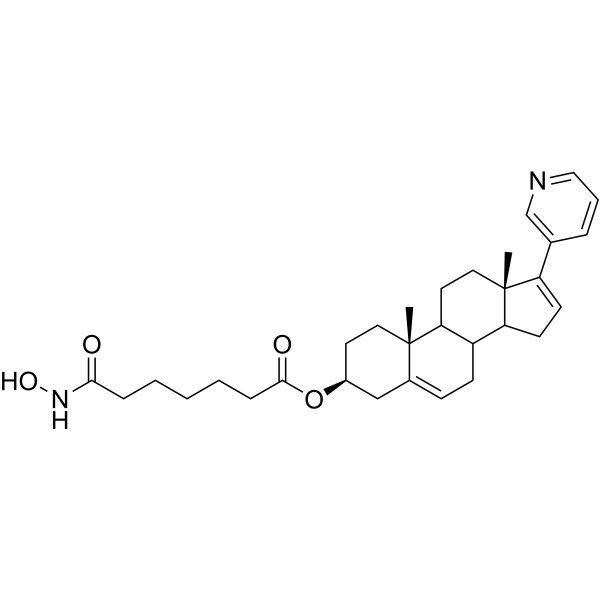
-
- HY-14942
-
|
RTA 744 free base; WP 744 free base; WP 769
|
Others
|
Cancer
|
|
Berubicin (RTA 744 free base; WP 744) is a 4'-O-benzyldoxorubicin that inhibits P-gp and MRP1-mediated efflux and has anticancer activity. Berubicin inhibits glioblastoma multiforme (GBM) and exhibits cytotoxicity. Berubicin has poor bioavailability in mice .
|
-
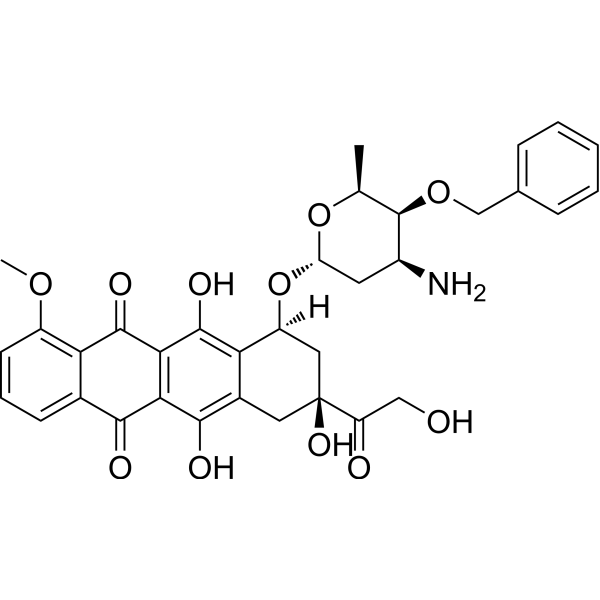
-
- HY-157168
-
|
|
Trk Receptor
|
Neurological Disease
|
|
TrkA-IN-6 (compound R48) is a hydrazone-like, selective inhibitor of tropomyosin kinase type A receptor kinase (TrkA). TrkA-IN-6 exhibited a higher cytotoxic effect on U87 GBM cells than Temozolomide (HY-17364), with an IC50 of 68.99 μM .
|
-

-
- HY-111187
-
|
KX-02
|
Src
Microtubule/Tubulin
Apoptosis
|
Cancer
|
|
KX2-361 (KX-02) is a Src-kinase and tubulin polymerization inhibitor. KX2-361 shows good oral bioavailability and readily crosses the BBB in mice. KX2-361 shows anti-tumor activity and induces apoptosis of Glioblastoma (GBM) cell .
|
-
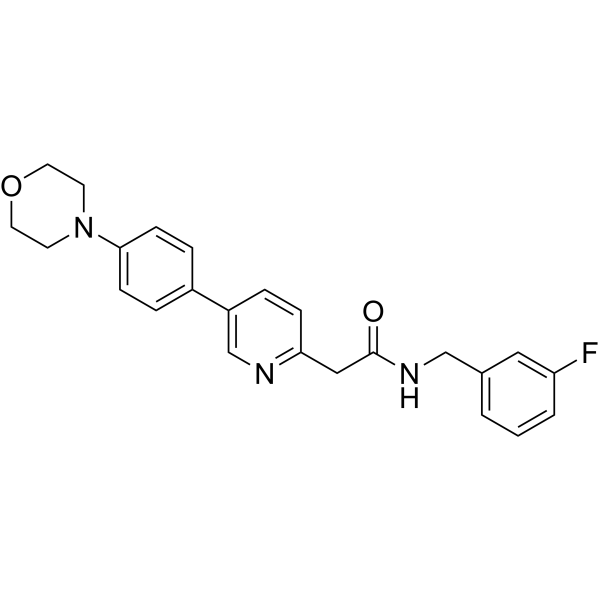
-
- HY-103407A
-
|
|
Dopamine Receptor
|
Neurological Disease
Cancer
|
|
PD 168568 dihydrochloride is a orally active and potent dopamine receptor D4 (DRD4) antagonist. PD 168568 dihydrochloride contains an isoindolinone and is selective for the D4 receptor versus D2 and D3, with Ki values of 8.8, 1842, and 2682 nM, respectively. PD 168568 dihydrochloride can be used for glioblastoma (GBM) research .
|
-
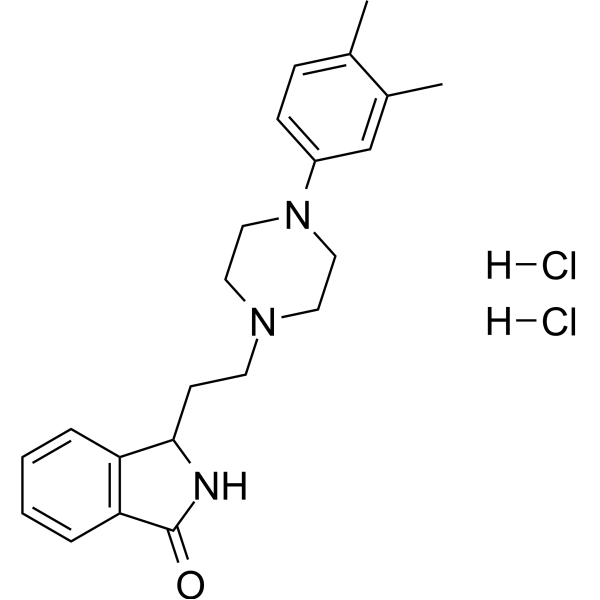
-
- HY-112293
-
|
|
EGFR
|
Cancer
|
|
GW2974 is a potent dual inhibitor of EGFR and HER2 with IC50 value of 0.007 μM and 0.016 μM, respectively. GW2974 demonstrates in vitro inhibition of the EGFR and HER2 and inhibits the growth of tumor cell. GW2974 can be used for glioblastoma multiforme (GBM) disease research .
|
-

-
- HY-155577
-
|
|
Monoamine Oxidase
HSP
|
Cancer
|
|
MAO A/HSP90-IN-1 (4-b) is a MAO A/HSP90 dual inhibitor with IC50 value of 1.77 μM and 0.019 μM in Glioblastoma (GBM) GL26 cells and HSP90α, respectively. MAO A/HSP90-IN-1 (4-b) can inhibit MAO A activity, HSP90 binding and the expression of HER2 and phospho-Akt to inhibit the growth of GBM, they also reduce PD-L1 expression, which inhibits T cell activation. MAO A/HSP90-IN-1 (4-b) have potential to inhibit tumor immune escape. MAO A/HSP90-IN-1 (4-b) can be used for brain tumor-related diseases research .
|
-
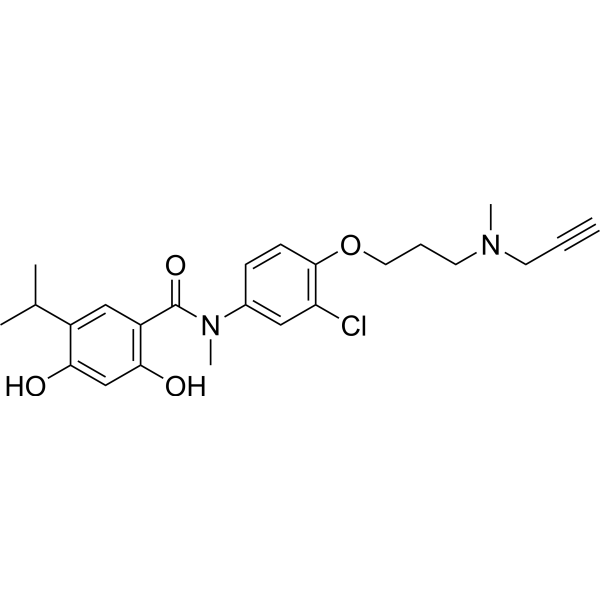
-
- HY-19345
-
|
NSC13316
|
|
|
|
Vacquinol-1 (NSC13316) is a MKK4-specific activator that activates MAPK pathways . Vacquinol-1 specifically induces human glioblastoma cell (GC) death, attenuates tumor progression and prolongs survival in a glioblastoma multiforme (GBM) mouse model . Vacquinol-1 also induces apoptosis in hepatocellular carcinoma (HCC)cell .
|
-
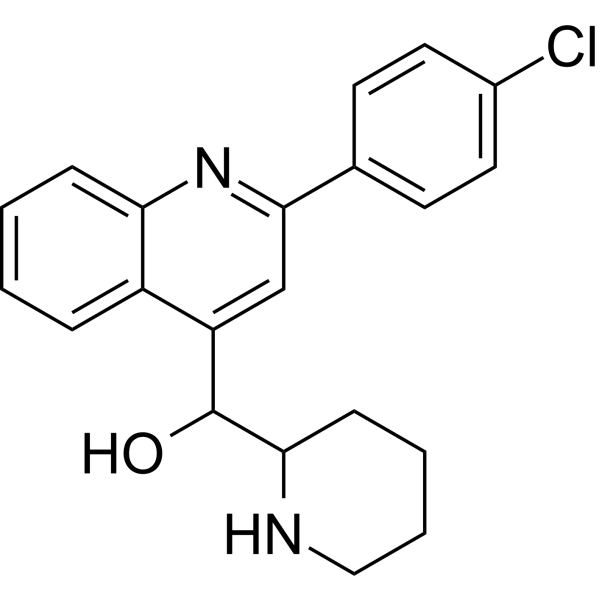
-
- HY-19345A
-
|
NSC13316 dihydrochloride
|
Others
|
Cancer
|
|
Vacquinol-1 (NSC13316) dihydrochloride is a MKK4-specific activator that activates MAPK pathways . Vacquinol-1 dihydrochloride specifically induces human glioblastoma cell (GC) death, attenuates tumor progression and prolongs survival in a glioblastoma multiforme (GBM) mouse model . Vacquinol-1 dihydrochloride also induces apoptosis in hepatocellular carcinoma (HCC)cell .
|
-
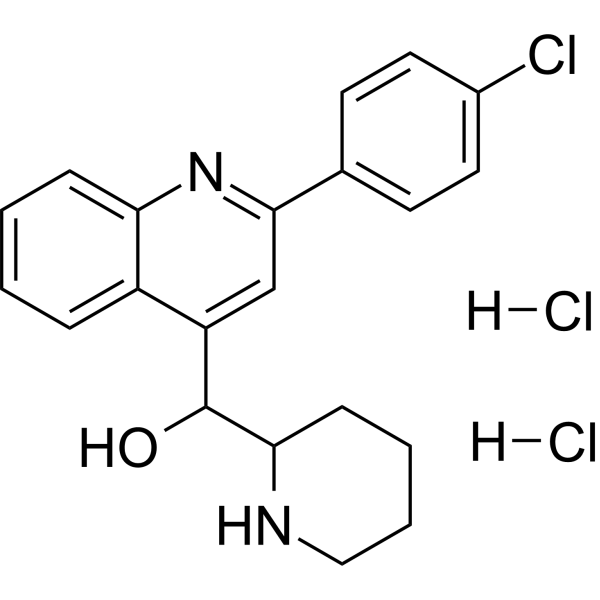
-
- HY-152859
-
|
BI 907828
|
E1/E2/E3 Enzyme
MDM-2/p53
|
Cancer
|
|
Brigimadlin (BI 907828) is an orally active E3 ubiquitin-protein ligase MDM-2 inhibitor, preventing MDM-2 from negatively regulating the tumor suppressor p53. Brigimadlin can be used for antineoplastic research .
|
-
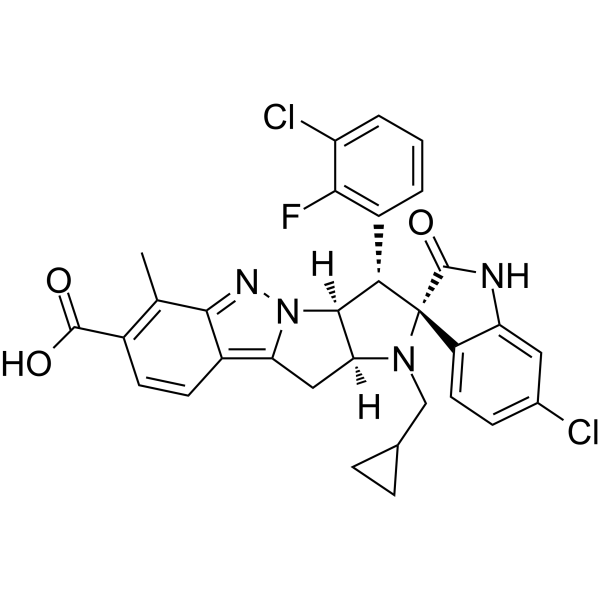
-
- HY-P99715
-
|
ABT-806
|
EGFR
|
Cancer
|
|
Losatuxizumab (ABT-806) is an anti-EGFR monoclonal antibody. Losatuxizumab binds to EGFR with EC50s of 0.96 nM for EGFR wild-type, 0.09 nM for EGFR C271A,C283A, 0.12 nM for EGFRvIII, 0.66 nM for EGFR1-501. Losatuxizumab can be used for research of EGFR-expressing cancers .
|
-

-
- HY-156019
-
|
|
FGFR
|
Cancer
|
|
FGFR1 inhibitor-10 (Compound 4i) is an FGFR1 inhibitor (IC50: 28 nM). FGFR1 inhibitor-10 inhibits the phosphorylation of FGFR1. FGFR1 inhibitor-10 has anti-angiogenic, anti-invasion activity, and anti-tumor effect .
|
-
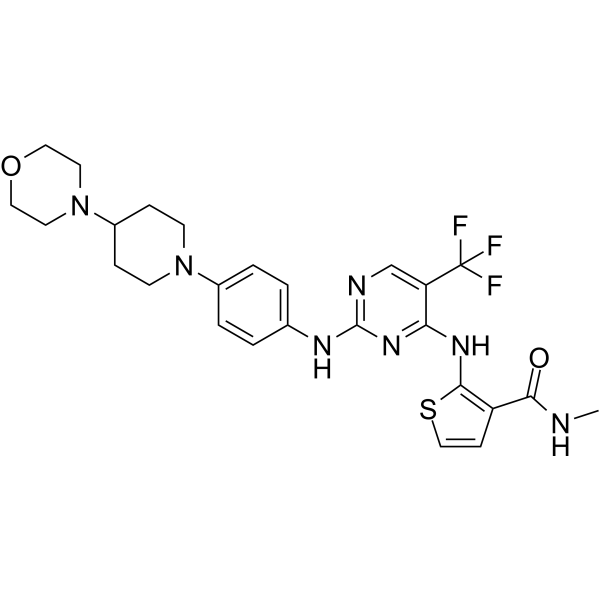
-
- HY-19939S
-
VX-984
4 Publications Verification
M9831
|
DNA-PK
|
Cancer
|
|
VX-984 is an orally active, potent, selective and BBB-penetrated DNA-PK inhibitor. VX-984 efficiently inhibits NHEJ (non-homologous end joining) and increases DSBs (DNA double-strand breaks). VX-984 can be used for glioblastomas (GBM) and non-small cell lung cancer (NSCLC) research. VX-984 is a de novo deuterium .
|
-
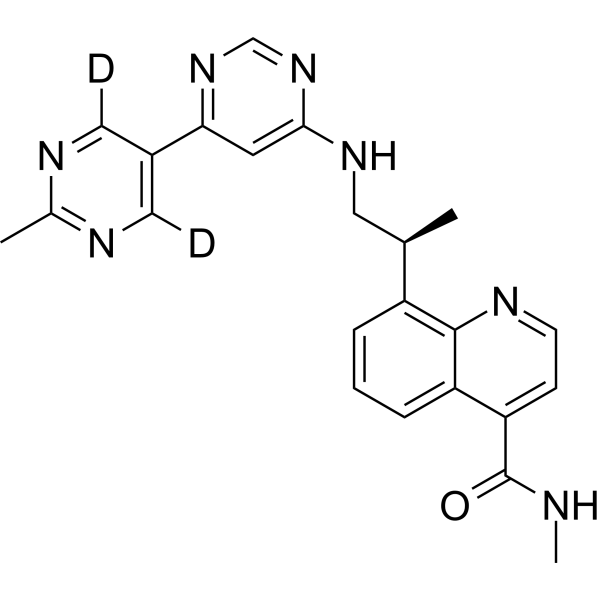
-
- HY-149374
-
|
|
Microtubule/Tubulin
|
Cancer
|
|
Tubulin inhibitor 36 (Compound 10) is a novel and potent tubulin inhibitor and inhibits the polymerization of microtubular protein then induces apoptosis with an IC50 value of 1.5±0.1 μM. Tubulin inhibitor 36 (Compound 10) has significant anti-mitotic effect and exhibits activities against glioblastoma cells. Tubulin inhibitor 36 (Compound 10) has anti-tumor effects and can be used for glioblastoma multiforme (GBM) research .
|
-
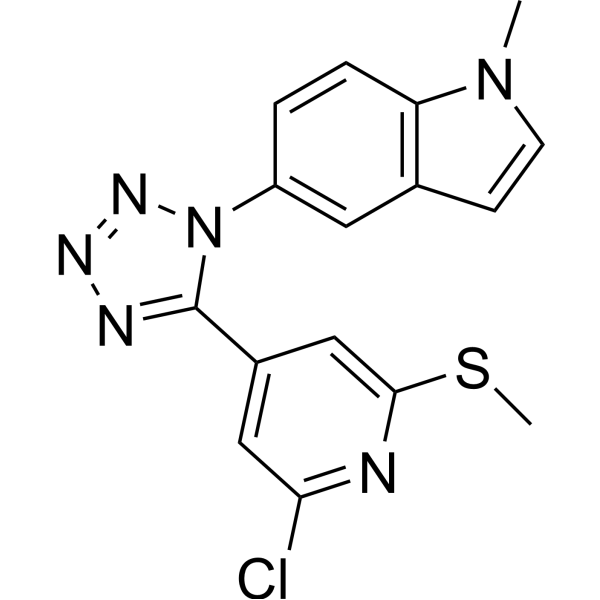
-
- HY-122815
-
|
Fusicoccin A
|
Apoptosis
|
Cancer
|
|
Fusicoccin (Fusicoccin A), a fungal pytotoxin, is a stabilizer of specific 14-3-3 protein-protein interactions. Fusicoccin sabilizes H +-ATPase/14-3-3 cmplex in pants, maintaining the enzyme in activated state. Fusicoccin also stabilizes 14-3-3 protein interactions with binding partners containing a C-terminal 14-3-3 recognition motif (a mode 3 motif), such as ERα, GPIbα, TASK3, CTFR, and p53. Fusicoccin induces apoptosis in cancer cells and has anticancer activity .
|
-

-
- HY-115630
-
|
|
RIP kinase
Caspase
Apoptosis
|
Cancer
|
|
cRIPGBM chloride, an orally active, proapoptotic derivative. cRIPGBM can be generated from glioblastoma multiforme (GBM) cancer stem cells (CSCs). cRIPGBM(chloride) targets to receptor-interacting protein kinase 2 (RIPK2) to induce caspase 1-dependent apoptosis. cRIPGBM(chloride) suppresses the formation of RIPK2/TAK1 (prosurvival complex), and increases the formation of RIPK2/caspase 1 (proapoptotic complex). cRIPGBM(chloride) exerts potent anti-tumor activity in vivo in animal models .
|
-
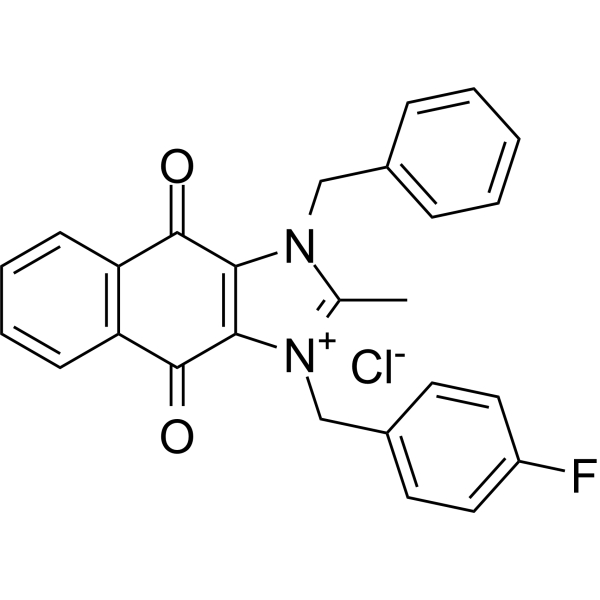
-
- HY-146320
-
|
|
Chloride Channel
|
Cancer
|
|
ANO1-IN-1 (Compound 9c) is a selective ANO1 channel blocker with an IC50 of 2.56 μM and 15.43 μM against ANO1 and ANO2, respectively. ANO1-IN-1 suppresses strongly proliferation of glioblastoma cells .
|
-
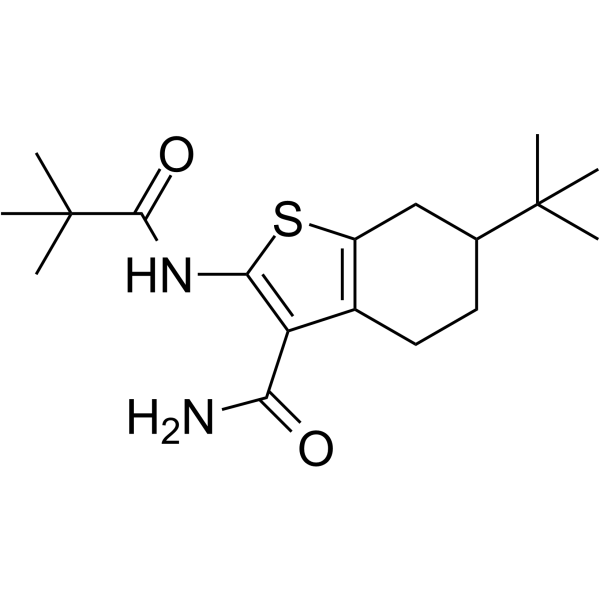
-
- HY-146321
-
|
|
Chloride Channel
|
Cancer
|
|
ANO1-IN-2 (Compound 10q) is a selective ANO1 channel blocker with an IC50 of 1.75 μM and 7.43 μM against ANO1 and ANO2, respectively. ANO1-IN-2 suppresses strongly proliferation of glioblastoma cells .
|
-
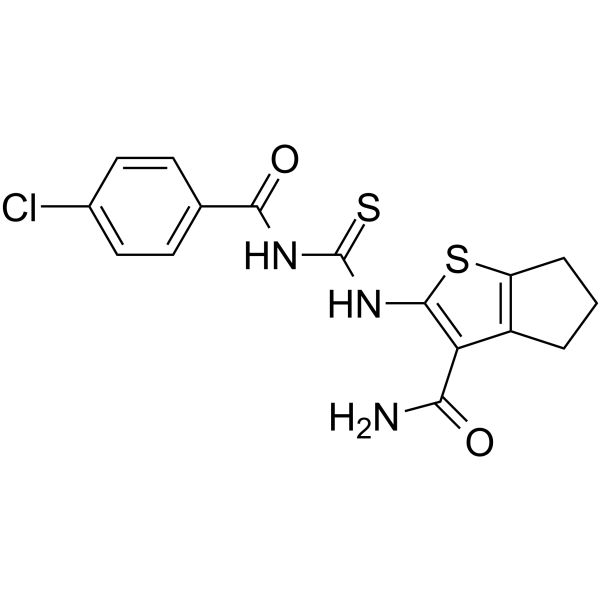
-
- HY-117357
-
|
|
SGK
|
Cancer
|
|
SI-113 is a SGK1 inhibitor, with an IC50 of 600 nM. SI113 induces autophagy .
|
-

- HY-W598456
-
|
|
Others
|
Cancer
|
|
Brigimadlin intermediate-1 is an intermediate of the E3 ubiquitin protein ligase MDM-2 inhibitor Brigimadlin (HY-152859) and can be used to synthesize Antibody-Drug Conjugates (ADCs) .
|
-
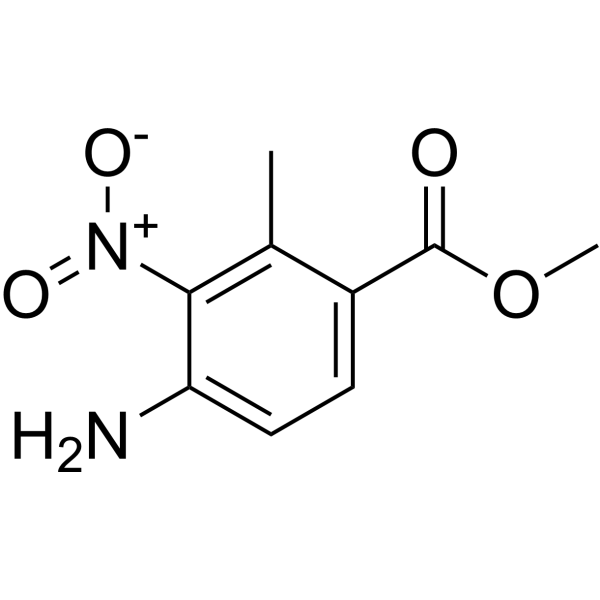
- HY-155580
-
|
|
Monoamine Oxidase
HSP
|
Cancer
|
|
MAO A/HSP90-IN-2 (compound 4-C) is a dual inhibitor of HSP90and MAO A with the IC50 values of 0.016 and 4.58 μM, respectively. MAO A/HSP90-IN-2 increases HSP70 expression and reduces HER2 and phospho-Akt expression, and decreases IFN-γ induced PD-L1 expression in GL26 cells. MAO A/HSP90-IN-2 inhibits the growth of Temozolomide (HY-17364) -sensitive and -resistant GBM cells, colon cancer, leukemia, non-small cell lung and other cancers, and has potential to inhibit tumor immune escape [1].
|
-

- HY-147409
-
|
|
CDK
|
Cancer
|
|
Ulecaciclib is an orally activitive inhibitor of cyclin-dependent kinase (CDK), with Ki values of 0.62 μM (CDK2/Cyclin A), 0.2 nM (CDK4/Cyclin D1), 3 nM (CDK6/Cyclin D3), and 0.63 μM (CDK7/Cyclin H), respectively. Ulecaciclib can cross blood brain barrier and has good pharmacokinetic characteristics .
|
-
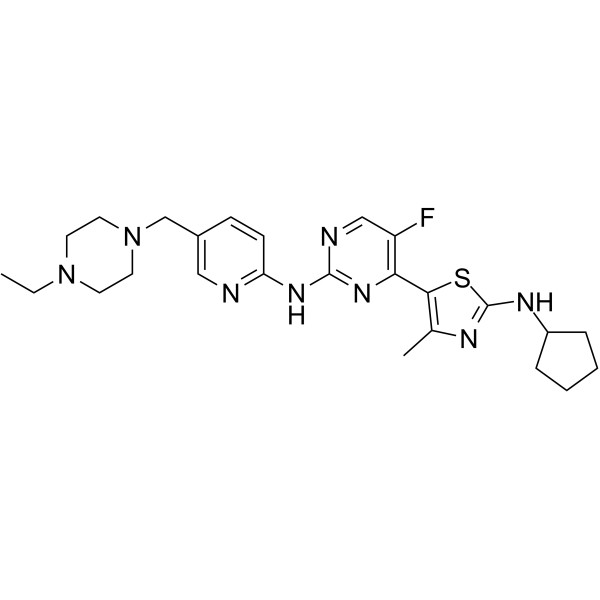
| Cat. No. |
Product Name |
Type |
-
- HY-149696
-
|
|
Dyes
|
|
IR-Crizotinib is a NF-κB-inducing kinase (NIK) inhibitor that crosses the blood-brain barrier and fluorescently localizes intracranial glioblastoma (GBM) in mice (IC50=3.381 μM). IR-Crizotinib is conjugated from the near-infrared dye IR-786 and the NF-κB-inducing kinase (NIK) inhibitor Crizotinib. IR-Crizotinib can effectively inhibit the growth and invasion of glioma in vitro and in vivo and can be used in cancer research .
|
| Cat. No. |
Product Name |
Target |
Research Area |
-
- HY-P1828A
-
|
|
Peptides
|
Cancer
|
|
EGFRvIII peptide (PEPvIII) TFA is a tumor-specific mutation that is widely expressed in glioblastoma multiforme (GBM) and other neoplasms and its expression enhances tumorigenicity. EGFRvIII peptide TFA represents a truly tumor-specific target for antitumor immunotherapy .
|
-
- HY-P1828
-
|
|
Peptides
|
Cancer
|
|
EGFRvIII peptide (PEPvIII) is a tumor-specific mutation that is widely expressed in glioblastoma multiforme (GBM) and other neoplasms and its expression enhances tumorigenicity. EGFRvIII peptide represents a truly tumor-specific target for antitumor immunotherapy .
|
| Cat. No. |
Product Name |
Target |
Research Area |
-
- HY-P99445
-
|
APG101; CAN008
|
TNF Receptor
|
Inflammation/Immunology
Cancer
|
|
Asunercept (APG101; CAN008) is a soluble CD95-Fc fusion protein targeting CD95L. Asunercept disrupts CD95/CD95L signaling by selectively binding to CD95L. Asunercept can be used in the research of glioblastoma multiforme (GBM), myelodysplastic syndrome (MDS), and graft-versus-host disease (GvHD) .
|
-
- HY-P99715
-
|
ABT-806
|
EGFR
|
Cancer
|
|
Losatuxizumab (ABT-806) is an anti-EGFR monoclonal antibody. Losatuxizumab binds to EGFR with EC50s of 0.96 nM for EGFR wild-type, 0.09 nM for EGFR C271A,C283A, 0.12 nM for EGFRvIII, 0.66 nM for EGFR1-501. Losatuxizumab can be used for research of EGFR-expressing cancers .
|
| Cat. No. |
Product Name |
Category |
Target |
Chemical Structure |
| Cat. No. |
Product Name |
Chemical Structure |
-
- HY-19939S
-
4 Publications Verification
|
|
VX-984 is an orally active, potent, selective and BBB-penetrated DNA-PK inhibitor. VX-984 efficiently inhibits NHEJ (non-homologous end joining) and increases DSBs (DNA double-strand breaks). VX-984 can be used for glioblastomas (GBM) and non-small cell lung cancer (NSCLC) research. VX-984 is a de novo deuterium .
|
-

Your information is safe with us. * Required Fields.
Inquiry Information
- Product Name:
- Cat. No.:
- Quantity:
- MCE Japan Authorized Agent:





























































